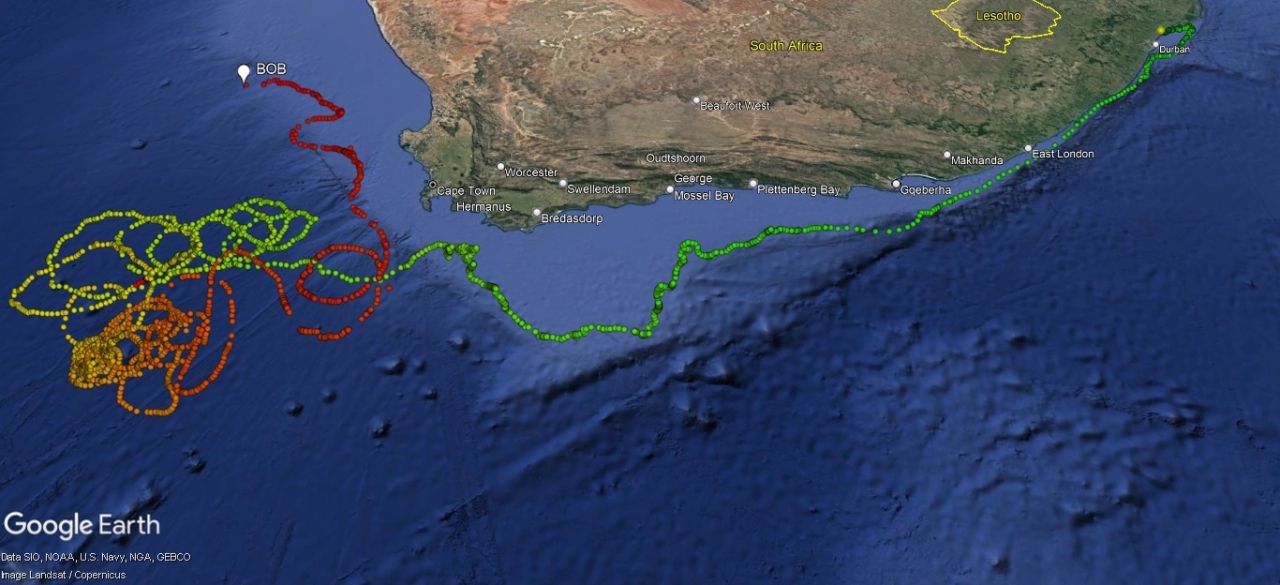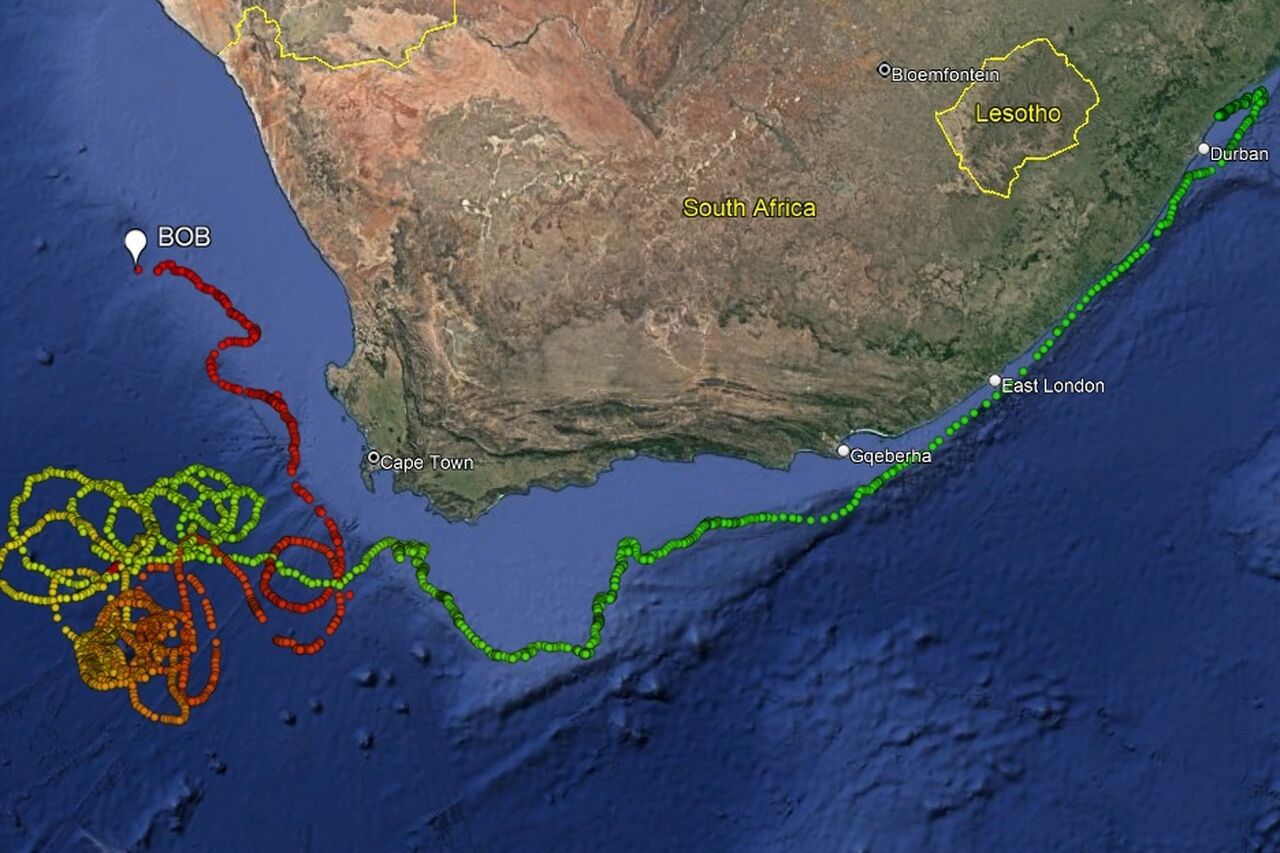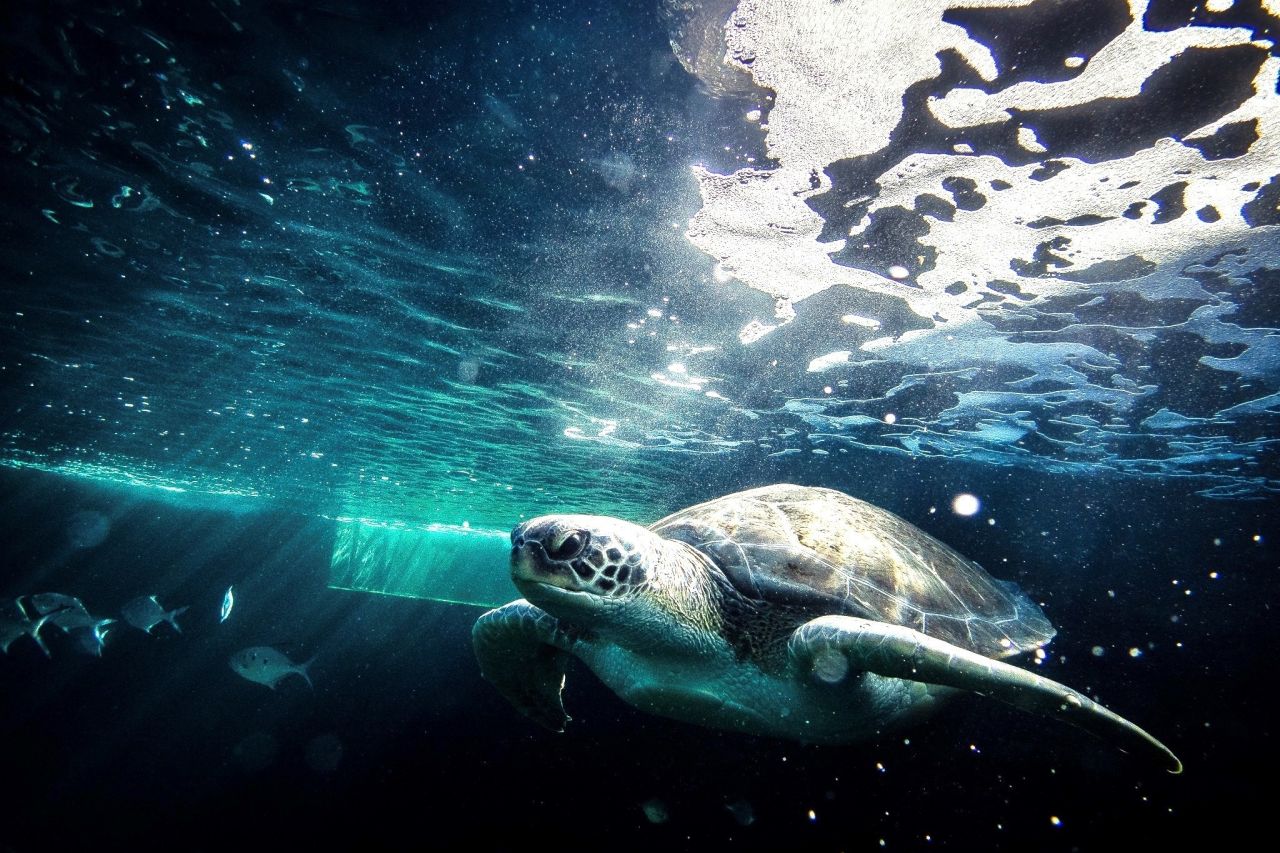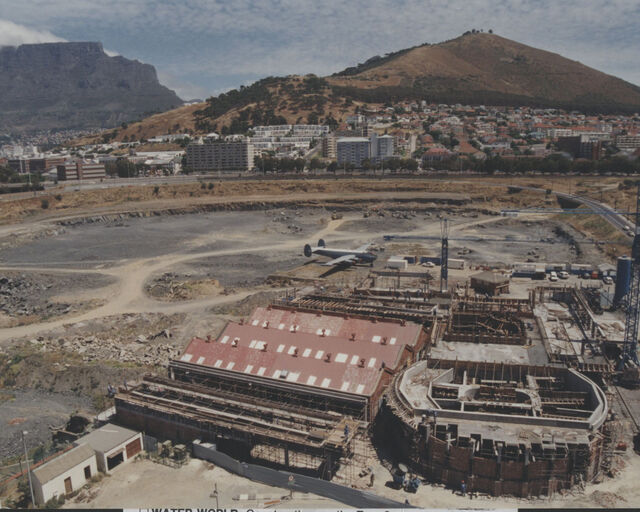Tracking Turtles: Bob's final update!

In the early hours of the morning on 3 October, we came to the end of a chapter as our beloved green turtle Bob’s satellite tag stopped transmitting. As all satellite tags eventually do, Bob’s tag must have fallen off her shell as she was swimming. Luckily, this is not the end of her story…
Talitha Noble, Conservation Manager at the Two Oceans Aquarium Foundation’s Turtle Conservation Centre, tells us more.
I remember it so clearly: those first moments of Bob being released into the warm ocean in KwaZulu Natal. As the thrill and adrenaline of her long-awaited release started to wear off, I began to feel some maternal concern about whether she would be okay.
I am grateful to say that the concern quickly faded as we marvelled at Bob's exciting journey, watching with pride as she navigated the east coast of South Africa, riding the Agulhas Current, staying on the inside of the continental shelf, and hanging out in Marine Protected Areas (MPAs) wherever possible.
The value of MPAs hit home in a new way as we watched Bob's journey, feeling a real sense of relief each time that she entered the boundaries of a safer, more protected piece of ocean.
Imagine the myriad of wonders Bob saw while travelling down our coastline – we had a front-row seat to all of it! Bob visited the friendly hammerhead sharks in Aliwal Shoal, saw the beginning of the sardine run in the Eastern Cape, and had a fun little check-in on the whales in Hermanus. All these adventures took place in Bob's first six weeks back in the ocean.
At this six-week mark, the pace changed as Bob entered what would be a seven-month rollercoaster in the surface currents of the South Atlantic Ocean. These smooth-flowing surface currents substantially aided Bob’s speed, decreasing the effort needed for her to swim. Throughout this time, the turtle team was reassured by Bob’s intentionally energy-saving swimming – she was going with the flow of the currents and not trying to swim against them.
In our last month of tracking Bob, we saw her moving in a northerly direction along the continental shelf. Food was most likely the motivation for the gear change as Bob started swimming in a straight line towards the summer blooms of jellyfish, about 200km offshore of the Namaqua National Park.
Then, on the 3rd of October at 07:07, Bob’s satellite tag stopped transmitting. The last transmission point was 300km west off the coast of Hondeklipbaai. We had the great privilege of tracking Bob for 249 days (about eight months), 12 656 km, and through over half of South Africa’s 42 MPAs!

Why did Bob’s tag stop?
Green turtles like Bob are notoriously tricky to tag: their shells, as well as being softer than those of other turtle species, excrete oil that makes it hard for satellite tags to grip for very long. Therefore, we suspect that the tag has fallen off Bob's carapace. Generally, we have been able to track other turtle species for much longer, like Yoshi the loggerhead turtle who travelled over 40 000 kilometres!
Complete freedom is the ultimate reward for eight years of difficult rehabilitation, so although we are sad to have lost contact with Bob’s satellite tag, we are thrilled that her journey is continuing!
So, what’s next for Bob?
The important thing to note is that whilst this tracking chapter is closed, our journey with Bob still has much excitement ahead!
In May this year, we found out with certainty that our dear Bob is a female! This means that at some point in the future, she will return to the beach where she hatched to lay clutches of her own offspring. Before her release, our veterinary team took genetic samples from Bob – these will be crucial in determining the region of the world she is originally from. As turtles imprint on the beaches of their birth, these genetic samples will give us huge insight into where Bob might return to breed.
Furthermore, Bob was not only satellite-tagged but also acoustic and flipper-tagged. The acoustic tag faces the same retention challenges with green turtles’ oily skin as it is attached to Bob’s shell. However, the flipper tags (attached to Bob’s front flippers) are likely going to keep their position for many years to come. Flipper tagging is a very reliable and commonly used tracking method for turtles – a small, unobtrusive metal or salt-resistant alloy device is attached to the turtle’s flipper. Despite being quite basic, this tag identifies the turtle and provides scientists with important information, such as the date it was tagged and the place of release. These details are stamped onto the tag by way of a numeric code. So, Bob’s flipper tag (labelled ZA0497) tells anyone who encounters her in her future travels exactly where she came from!
I do not doubt that we are going to get a phone call in some years' time from turtle colleagues on a pristine tropical beach, calling us to say that a beautiful turtle with a flipper tag ZA0497 has come to nest. And you’d better believe that we will be on our way to go say hi to Bob (and probably re-tag her) faster than you can say, "Turtle tracking is the coolest!”.

Related News
Sign up to our Newsletter
Receive monthly news, online courses and conservation programmes.




